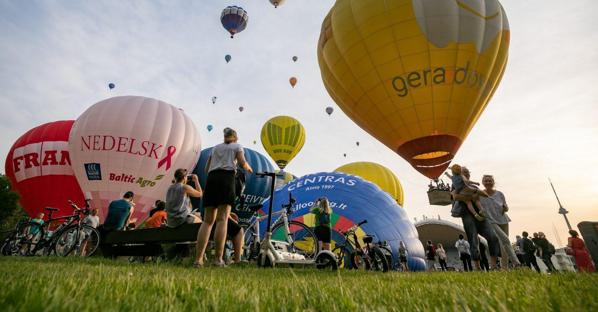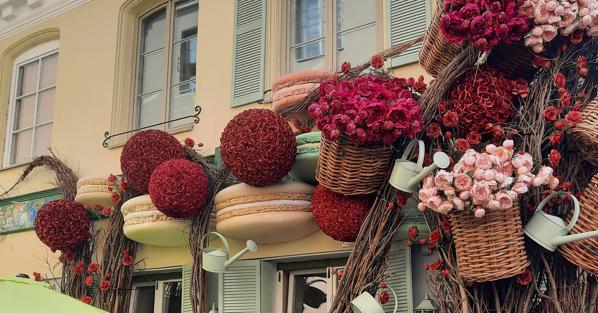Art and traditions in the old alleys of Vilnius
[ad_1]
Vast expanses of fields and forests in light green and dark green. streams and lakes. Many lakes, some of which are interconnected. Rare housing. More than just a city, the Vilnius region seen from above looks like a brilliantly designed endless golf course. When the plane is almost landing, in the playground next to the airport, you can see children bent over to play and some hands raised in greeting. A pastoral scene is interrupted only by a taxi ride to the city centre, ten minutes away, when the eye is drawn to the graffiti “Did you call Russia today?” , which refers to an initiative to raise awareness of the war in Ukraine towards the Russian population. But the noise of war does not affect the desire to raise awareness of the architectural and natural wealth of Lithuania and its capital in particular, which this year celebrates its 700th anniversary with an eventful program.
A mixture of architectural styles
Easily accessible by plane from northern Italy with Ryanair and Wizzair or Lot flights directly via Warsaw, the city is a mixture of Gothic, Renaissance, Baroque and Neoclassical architecture reflecting history, which has endowed the city with many churches (50 between Catholic and Orthodox), bell towers and buildings, attesting to the 80% of its Catholic population. The visit can only start from the historic center, a magnificent example of Baroque architecture and a World Heritage Site since 1994. You can visit it on foot, discovering step by step the charm of its winding streets and picturesque squares full of flowers, among the artists’ workshops and admiring the bell towers of the churches, where concerts of classical and sacred music are organized. Of these, the Gothic Revival Church and St. Casimir’s, the first Baroque church in Lithuania, is the most famous.
To Gediminias Tower by funicular
Do not miss visiting the old Jewish quarter with its ghetto and the architectural complex of the university, founded in 1579, with its Gothic, Renaissance, Baroque and Classical buildings and its 12 monasteries. Next to the Old Town, then, one of the symbols of the Lithuanian capital is the Gediminias Tower, on the hill of the same name, which can be reached by funicular or on foot. The tower is located behind the cathedral square in the neoclassical style, the old city gate. The cathedral, dedicated to Saints Stanislaus and Vladislaus, is the most important Catholic building in the country, and is where many rulers of Lithuania and Poland were crowned.
Republic of Independent Artists
The new town, which was built almost entirely in the 19th century, is characterized by modern buildings and green spaces. Here is the Center for Contemporary Art, the largest museum dedicated to the art of the 21st century in the Baltics, where works of Lithuanian and foreign artists are kept. On the other hand, the National Gallery of Art presents a collection of 20th century works including paintings, sculptures, prints, and photographs. The bridge over the Vinelil River, which leads to Uzubis, the independent Republic of Artists, which has its own coat of arms, flag and constitution hanging on a wall near Baubis, is very impressive. It is a legendary place, born out of the rebellion of Lithuanian poet, musician and filmmaker Romas Lilekis, who created a republic of artists founded on themes of creativity, art and imagination. From a run-down neighborhood, Uzupis began attracting artists and intellectuals in the 1990s, becoming an increasingly trendy area with the ateliers of painters, potters, and bohemians.
From a terrifying prison to a place of entertainment
Citizens of Vilnius are keen to talk about Lukiškės Prison, which has a truly fascinating story, and make them visit. Until 2019 it was an imposing detention center (the last year of activity amounted to 600 inmates), but with the onset of 2020 the place has found a new use, allowing it to become a popular location as a filming location for TV series and a recreational space, with an open-air cinema room and places to have a snack or a beer. In fact, the prison is outdated and in need of renovation, and it also faces the problem of overcrowding. Hence the move of the prisoners and the new life of the building, leaving its visitors with a feeling of distress over the living conditions of the former prisoners.
[ad_2]
Source link










